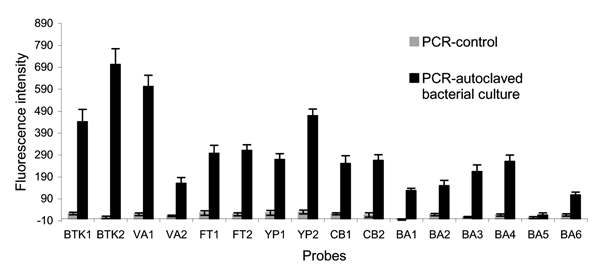Volume 11, Number 10—October 2005
Dispatch
Detecting Biological Warfare Agents
Figure 1

Figure 1. Array detection of single polymerase chain reaction (PCR) products from autoclaved bacterial cultures of the 6 microorganisms listed in Table A3 by using single bead–type arrays. PCR and array hybridization conditions are described in the Appendix. Single bead–type arrays were fabricated containing ≈100 replicates of each microsphere probe. The standard deviation (SD) of background images is 15 (N = 3), and the detection limit is 45, defined as 3 × SD.
Page created: February 21, 2012
Page updated: February 21, 2012
Page reviewed: February 21, 2012
The conclusions, findings, and opinions expressed by authors contributing to this journal do not necessarily reflect the official position of the U.S. Department of Health and Human Services, the Public Health Service, the Centers for Disease Control and Prevention, or the authors' affiliated institutions. Use of trade names is for identification only and does not imply endorsement by any of the groups named above.